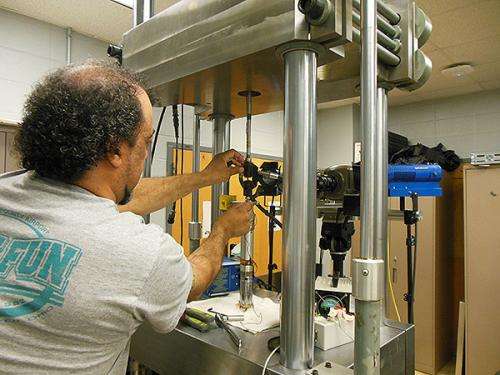Building cars from plastic

Plastic cars are coming out of the toy box and heading for your nearest dealership showroom floor. The University of Dayton Research Institute and the American Chemistry Council have launched an effort to help ensure they will be safe.
Facing growing pressure for more fuel-efficient vehicles, the auto industry is increasingly looking to polymers to make vehicles lighter. But because the industry is also being tasked to meet progressively rigorous safety standards, those polymers need to be in the form of strong, fiber-reinforced materials that will hold up under impact, said Susan Hill, group leader for structures and materials evaluation at the University of Dayton Research Institute.
The key to understanding how advanced polymers and composites will behave in a collision lies in a materials testing standard – specifically, a standard for high-rate tensile testing of filled polymers, which measures the material's strength under the kind of stress it would experience in a crash. That standard, however, does not exist. So Hill has teamed up with the ACC to spearhead its development.
"A revolution is coming to the auto industry, by way of fiber-filled polymers and composites, that will open up the landscape for automobile 'lightweighting' without sacrificing vehicle safety," Hill said. "But before the industry will adopt composites on a widespread basis, they need to be able to understand and predict how materials will behave in a collision. They need to understand how strong the materials and the structures made from them are, and how they will absorb and distribute energy from impact. A high-rate tensile test standard is critical to that understanding."
Hill coordinated a kick-off meeting, hosted by the ACC and the Research Institute and attended by members of the automotive and aerospace communities, at the ACC Automotive Center headquarters in Troy, Michigan, June 5. A second meeting is scheduled for Aug. 12, also in Troy, Michigan.
"We need to garner as much input as possible from all sectors of the vehicle-manufacturing supply chain to help us identify their needs and issues surrounding the use of polymers in vehicles, and to help us identify the scope of a new standard," Hill said. "We also need to focus on securing commitments of time and resources from interested parties in order to create a research timetable. The meeting is open to vehicle, parts and equipment manufacturers; materials suppliers and fabricators; designers; engineers; academic and professional researchers and technical societies.
Manufacturers are already using plastics in automobile interior and exterior trim and body panels, but not in structures with high-impact requirements, such as structural frames said Hill, who helped write the Society of Automotive Engineers International (SAE) standard (J2749) for tensile testing of unfilled polymers. The goal of the new effort is to expand the existing standard to include filled polymers.
Tensile testing, which applies tension to a material or structure until it breaks, provides valuable information about the strength and behavior of materials under pressure and what kind of stresses and environments they can withstand. That information can be used as the foundation for computer-based modeling and simulation of collisions, allowing manufacturers to greatly reduce the number of vehicles they need to destroy in actual collision simulations.
"A new standard will provide the industry with cost-saving information but, more importantly, it will pave the way for the manufacture of fuel-saving vehicles without compromising the safety of their occupants," Hill said.
Provided by University of Dayton



















